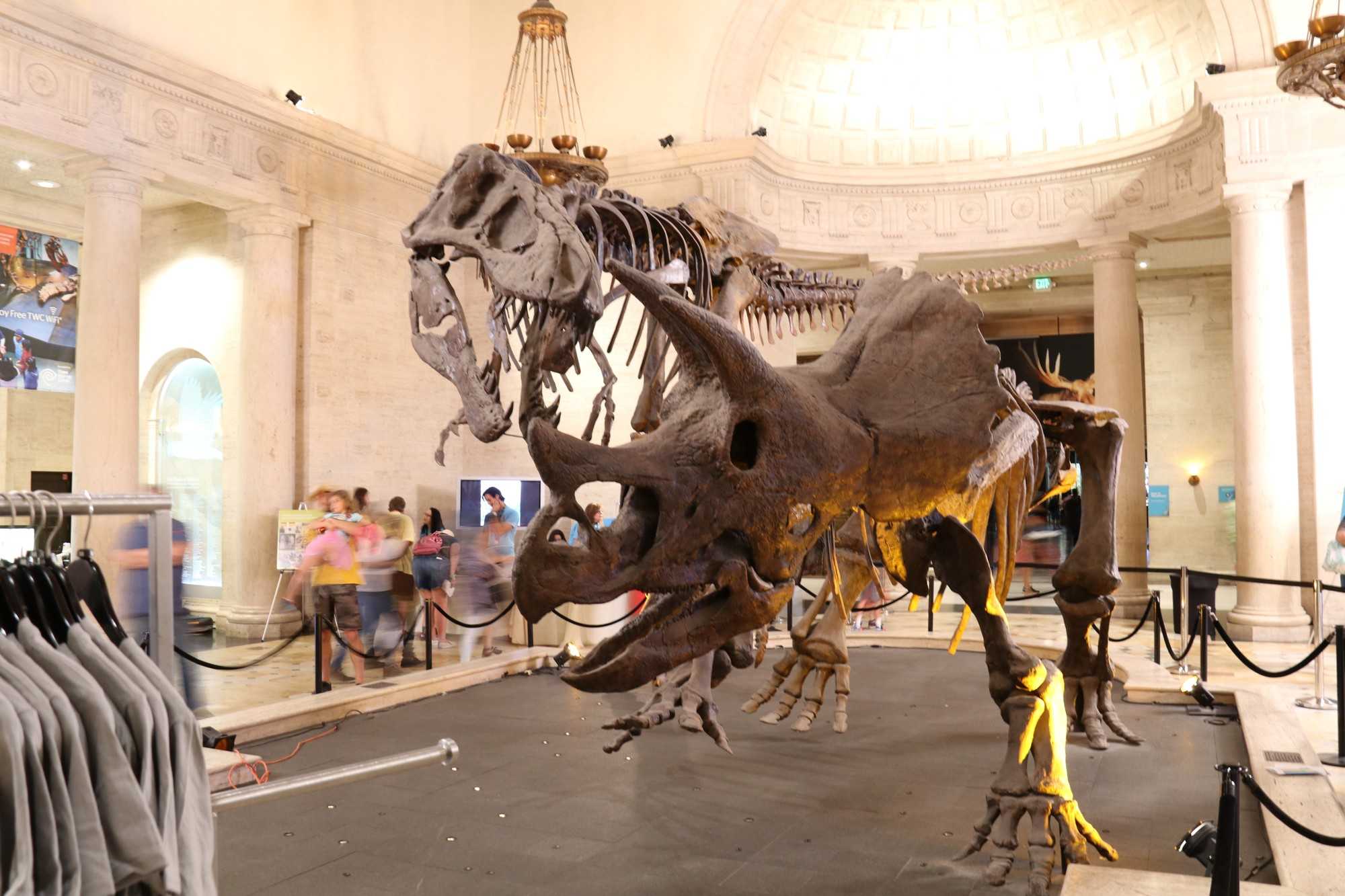The Natural History Museum of Los Angeles County held its first Dino Fest over the weekend, displaying fossils and other items from the prehistoric time of the dinosaurs.
Visitors walked from table to table observing fossils and replications of bones belonging to dinosaurs, flying and marine reptiles. Representatives from organizations stood behind displays to explain and show fossils and replicas.
These tables were mostly located at the entrance featuring the “Dueling Dinos” of a battling Triceratops and a Tyrannosaurus Rex regularly on display when guests walk into the museum.
Among these included one from the Raymond M. Alf Museum of Paleontology, the La Brea Tar Pits and the Southern California Paleontological Society. This included the evolutionary history of the three horned dinosaur Triceratops, tar-covered fossils and fossilized shellfish called ammonites.
In the African Mammal Hall, more tables from other organizations displayed replicas of skulls from Bone Clones, Inc. and live reptiles from Rock N Roll Reptiles, presented by Grayson Kent. With him was a boa constrictor, a box turtle, a European legless lizard, and Kodo, a Columbian tegu who was on a denim leash.
“It all clicked with him as a kid,” Karen Kent, Grayson’s mother, said. “Dinosaurs, reptiles, he saw the first ‘Jurassic Park’ movie.”
She presented the fibula and tibia of the sauropod dinosaur Diplodocus dyed green and red due to the malachite and iron in the soil of Utah, and skull fragments of the carnivore Allosaurus. Both creatures lived during the Jurassic Period, 145.5 million years ago.
Other tables included museum staff presenting amber and more fossils, including a comparison of the skull of Ichthyosaurus, a marine reptile, with those of ancient and modern dolphins. Each skull shares striking resemblances to each other, as paleontologists have noticed, according to museum staffer Jorge Velez-Juarbe.
The Dino Fest is the first of its kind, though there are summer events that regularly attract children to learn more about nature and prehistoric times.
“We wanted to do something in the fall,” Velez-Juarbe, assistant curator of marine animals, said. “People love dinosaurs and we want to showcase what we have in our collection. What comes from the collection is typically not on display in the Dinosaur Hall,” Velez-Juarbe said.
In addition to showing an appreciation of dinosaurs, the event served as a pilgrimage for enthusiasts and paleontologists alike.
Jack Horner, a paleontologist famous for being a consultant for all of the “Jurassic Park” films, was also in Los Angeles to give a presentation on the films.
He is known to be a proponent of the idea that birds are descended from dinosaurs and the potential to create a dinosaur from the DNA of a chicken, as presented in a TED Talk.
“It’s very impressive,” Horner said of the Dino Fest.
He had been to several similar events, but this one has been great he said.
On the ground level of the museum, several vehicles from the “Jurassic Park” movies were on display, as well as a model of a velociraptor from the first film.
The museum also had an associated exhibit on display, “Pterosaurs: Flight in the Age of Dinosaurs.” Inside, guests could view the fossilized remains of the flying reptiles that ruled the skies, along with their diverse appearances.
Models of the hairy Tropeognathus, the famous Pteranodon, and the massive Quetzalcoatlus could be seen hanging from the ceiling.
In a following room, guests could take part in an interactive flight simulator as one of these flying creatures, catching insects or gliding over different terrain.
According to museum staff, the attendance of the Dino Fest on the first day was at 5,000. At about noon, the attendance was at around 2,000.
“I really liked dinosaurs growing up,” Jonathan Peralez, a guest at the event, said. “They’re usually seen as something for kids, and this event is seen to be even for adults too. Dinosaurs never get old.”






